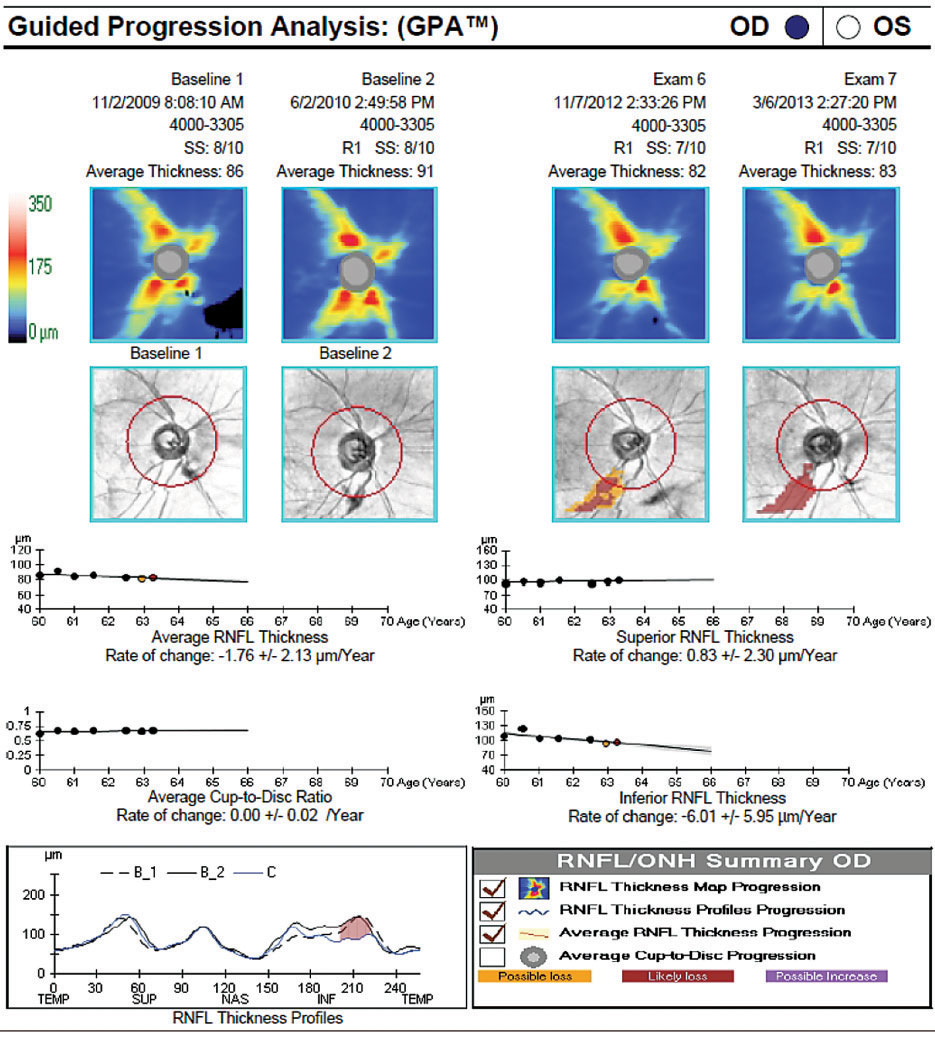 |
Obstructive sleep apnea may not affect the corneal nerves, but it was associated with RNFL thinning. Photo: Danica J. Marrelli, OD. Click image to enlarge. |
As much as 38% of the population has obstructive sleep apnea, a condition known to be an independent risk factor for peripheral neuropathy. Researchers recently performed a single-center cross-sectional study on patients with the condition vs. healthy controls to determine the relationship between the sleep disorder and corneal nerve morphology and sensitivity. While they determined that obstructive sleep apnea had no detectable effect on corneal nerves, they did conclude that the condition is associated with thinning of the retinal nerve fiber layer (RNFL). Optic nerve cupping was also demonstrated to increase with the severity of the disorder.
Of the 67 participants in the study, 39 were in the obstructive sleep apnea group and 28 were healthy controls. The various outcome measures included serologies, dilated fundus exam, dry eye testing, anthropometric parameters, corneal sensitivity, subbasal nerve plexus morphology, RNFL thickness and a set of questionnaires that assessed dry eye, risk of obstructive sleep apnea and continuous positive airway pressure compliance.
Between the two groups, no significant differences in corneal nerve morphology, sensitivity or number of dendritic cells were detected. In the sleep apnea group, RNFL thinning was present in the superior and inferior regions of the optic disc and the peripapillary region. Patients in this group were also more likely to require a glaucoma evaluation than controls. Lastly, in obstructive sleep apnea patients, an increase in the apnea-hypopnea index was associated with an increase in optic nerve cupping.
“While obstructive sleep apnea does not appear to exert a robust effect on corneal nerves, it does not fully exclude a relationship between obstructive sleep apnea and the onset of corneal neuropathy,” the researchers explained in their paper. “In contrast to diabetes, where corneal nerve changes represent a sensitive early metric for the onset of peripheral neuropathy, this may not be the case for obstructive sleep apnea.”
Because untreated obstructive sleep apnea could exacerbate glaucoma progression, the researchers suggest regularly screening patients who have risk factors for the disorder and/or glaucomatous optic nerve changes. On the other hand, corneal nerve changes aren’t reflective of the presence or severity of sleep apnea based on this study’s findings.
Bussan KA, Stuard WL, Mussi N, et al. Differential effects of obstructive sleep apnea on the corneal subbasal nerve plexus and retinal nerve fiber layer. PLoS ONE. June 30, 2022. [Epub ahead of print]. |


